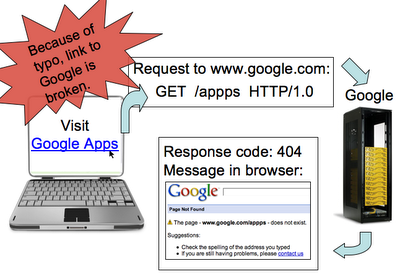2008年8月20日星期三
It's 404 week at Webmaster Central
近期我们将发表一系列博客,帮助您正确使用 404 响应代码。
响应代码是网络服务器在响应一个
URL
的浏览请求时返回的数字形式的状态代码(比如
200
代表“成功”,
301
代表“永久移动”)。如果请求的某一文件“无法找到”,那么服务器端将返回一个
404
响应代码。
当用户对您的网页发送请求时,您的服务器就会搜索这个 URL 所对应的文件。如果这个文件存在,您的服务器就会返回一个 200 状态代码以及相应信息(通常就是这个网页的内容,比如该页的 HTML 代码)。


近期我们将发表一系列博客,帮助您正确使用 404 响应代码。
当用户对您的网页发送请求时,您的服务器就会搜索这个 URL 所对应的文件。如果这个文件存在,您的服务器就会返回一个 200 状态代码以及相应信息(通常就是这个网页的内容,比如该页的 HTML 代码)。


